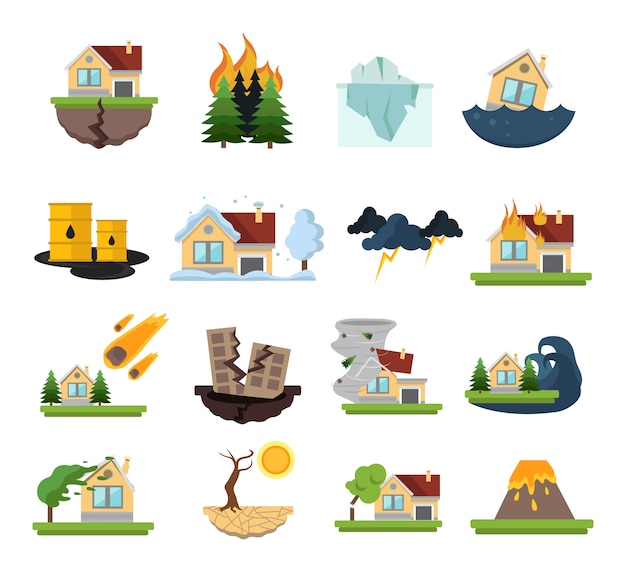Fascinating Facts about Earthquakes

Earthquakes can occur anywhere in the world, ranging from the depths of the ocean to mountainous regions.
The largest recorded earthquake in history was the Great Chilean Earthquake of 1960, measuring a magnitude of 9.5.
Earthquakes are caused by the sudden release of energy in the Earth’s crust, resulting in seismic waves.
The San Andreas Fault in California is one of the most well-known fault lines in the world and is responsible for many earthquakes in the region.
Earthquakes can be caused by human activities such as mining, drilling, or reservoir-induced seismic activity.
The Richter scale is used to measure the magnitude of an earthquake, with each whole number increase representing a tenfold increase in the amplitude of the seismic waves.
California experiences approximately 10,000 earthquakes each year, though most of them are too small to be felt by humans.
The deadliest earthquake in history occurred in 1556 in Shaanxi, China, estimated to have claimed the lives of 830,000 people.
Tsunamis can be triggered by large undersea earthquakes, causing massive destruction in coastal areas.
Earthquakes can cause landslides, avalanches, and even volcanic eruptions.
The Great East Japan Earthquake of 2011 and subsequent tsunami resulted in the Fukushima nuclear disaster.
Animals can sometimes sense impending earthquakes, displaying unusual behavior before the occurrence.
The intensity of an earthquake refers to the effects it has on the Earth’s surface, whereas the magnitude refers to the energy released during the event.
Fascinating Facts about Earthquakes part 2
Earthquakes can create temporary or permanent changes in the Earth’s landscape, such as the formation of new lakes or the collapse of buildings.
Earthquakes can be detected and monitored using seismographs, which measure the vibrations caused by the seismic waves.
Earthquakes can trigger secondary hazards such as fires, floods, or gas leaks.
The Great Alaska Earthquake of 1964 caused a massive tsunami that reached as far as Hawaii and Japan.
The word tsunami comes from the Japanese words tsu (harbor) and nami (wave).
The first documented earthquake occurred in China around 2300 BC.
Earthquakes are more common in areas near tectonic plate boundaries, such as the Pacific Ring of Fire.
The deadliest earthquake in the United States occurred in 1906 in San Francisco, resulting in the loss of an estimated 3,000 lives.
Earthquakes can occur on other planets and moons with solid surfaces, such as Mars or the Moon.
The 1906 San Francisco earthquake is the first earthquake to be photographed and captured on film.
The study of earthquakes is called seismology, and seismologists use various techniques to understand the Earth’s interior and study seismic activity.
Aftershocks are smaller earthquakes that occur after a main earthquake, and they can continue for days, weeks, or even months.
The San Francisco Bay Area experiences small earthquakes almost every day due to the complex system of faults in the region.
The deadliest earthquake in European history occurred in Lisbon, Portugal, in 1755, resulting in the deaths of tens of thousands of people.
The shaking intensity of an earthquake decreases with distance from the epicenter.
Earthquakes can release more energy than multiple atomic bombs.
In ancient Greece, earthquakes were often attributed to the wrath of the gods.
The largest recorded earthquake in the United States occurred in 1964 in Alaska, measuring a magnitude of 9.2.
The 2010 earthquake in Haiti resulted in the deaths of an estimated 230,000 people and caused widespread devastation.
Fracking, a method used to extract natural gas and oil from the ground, has been linked to increased seismic activity in certain areas.
Earthquakes can cause liquefaction, a phenomenon where saturated soil temporarily loses its strength and behaves like a liquid.
The world’s most active seismic zone is the circum-Pacific seismic belt, where several tectonic plates meet.
Earthquakes can travel through the Earth’s interior as P-waves (primary waves) and S-waves (secondary waves).
The deadliest earthquake in recorded history occurred in Shaanxi, China, in 1556, claiming the lives of around 830,000 people.
Earthquakes can displace large volumes of water, leading to a sudden rise or fall in sea level, known as a coseismic uplift or subsidence.
The term earthquake weather, the belief that certain weather conditions precede an earthquake, is not supported by scientific evidence.
The identification of earthquake precursors, such as changes in groundwater levels or animal behavior, is an active area of research.
The 1811-1812 New Madrid earthquakes in the central United States were so powerful that they reportedly caused the Mississippi River to flow backward.
The Great Hanshin earthquake in Kobe, Japan, in 1995 resulted in the deaths of over 6,400 people and caused billions of dollars in damage.
Earthquakes can create underground reservoirs of pressurized water, known as aquifers, which can be tapped for drinking water or geothermal energy.
Earthquakes can cause the Earth’s rotation to slightly slow down due to the redistribution of mass.
The study of historical earthquakes and their effects can provide valuable insights for assessing seismic hazards and designing safer structures.